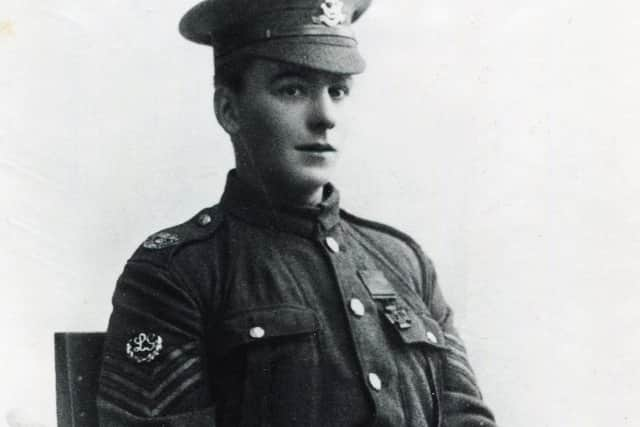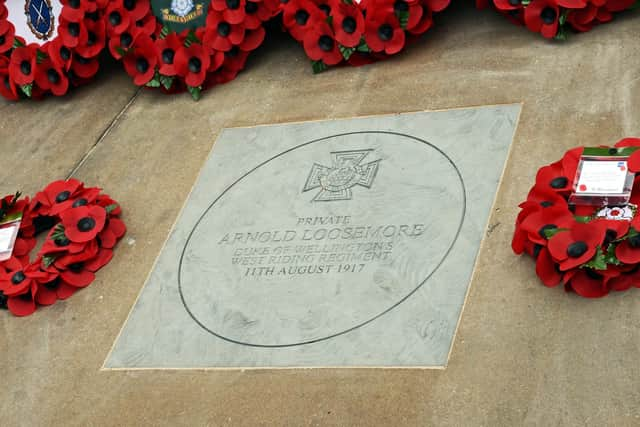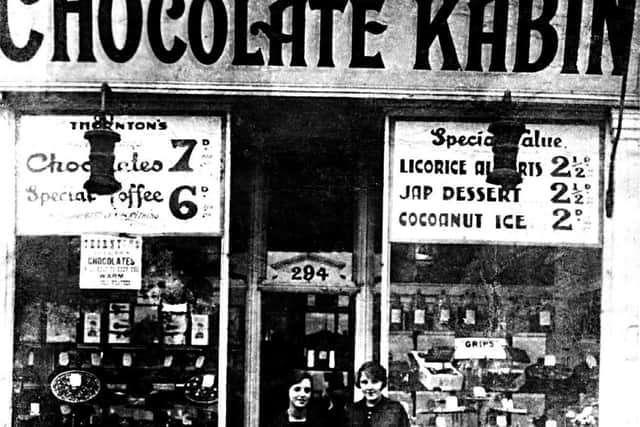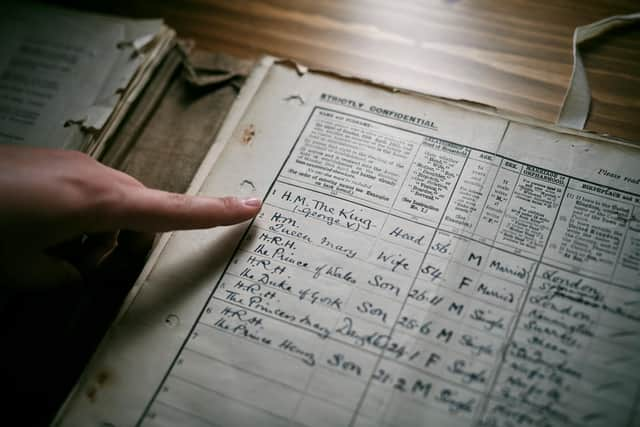The Sheffield war hero who crawled across a barbed-wire battlefield and single-handedly killed about 20 enemy soldiers
This article contains affiliate links. We may earn a small commission on items purchased through this article, but that does not affect our editorial judgement.
and live on Freeview channel 276
Sheffield war hero Arnold Loosemore, building firm boss Charles Boot and chocolate company head William Norman Thornton can all be found in the 1921 census for England and Wales, which has just been made public through the family history website www.findmypast.co.uk.
Arnold Loosemore’s entry on the census says he was a 25-year-old disabled, pensioned-off soldier living in Stannington Road, Sheffield with his wife Amy, aged 23, and their newborn son, Arnold junior.
Advertisement
Hide AdAdvertisement
Hide AdHe was born in Dyson Lane, Sharrow, the youngest of seven brothers, and was initially turned down for enlistment in World War One as being too small. After building up his strength working for a coal merchant, Arnold was signed up for the York and Lancaster Regiment in January 1915.


Lewis machine gunner Arnold, aged 19, won his medal in Ypres, Belgium in August 1917 for “most conspicuous bravery and initiative during the attack on a strongly-held enemy position.”
His medal citation said: “His platoon having been checked by heavy machine gun fire, he crawled through partially cut wire, dragging his Lewis gun with him, and single-handed dealt with a strong party of the enemy, killing about 20 of them, and thus covering the consolidation of the position taken up by his platoon.”
His Lewis gun was blown up by a bomb but he shot three soldiers who rushed at him with his revolver. He also shot several enemy snipers and brought back a wounded comrade under heavy fire at great risk. “He displayed throughout, an utter disregard of danger,” it said.
Advertisement
Hide AdAdvertisement
Hide AdKing George V presented Arthur with his medal in January 1918 and 2,000 Sheffielders turned out to a ceremony back home.


Promoted to corporal, he insisted on returning to battle and won a Distinguished Conduct Medal for capturing 11 prisoners and a light machine gun in a raid he led.
In October 1918, weeks before the armistice, Arnold was shot in both legs by a machine gun and one leg had to be amputated.
He married Amy on August 24, 1920. Tragically, Arnold died of TB in 1927.
Advertisement
Hide AdAdvertisement
Hide AdAmy was left struggling after her husband's death as his war pension stopped because he was already injured when they married.


He got a hero’s funeral – but the city council sent his widow the bill. Businesses collected money to help but Arnold’s grandson Kevin told The Star last year that his grandmother saw very little of it and the young family was left to struggle.
Mastermind of Pinewood film studios
Life was rather different for the other famous Sheffielders.
Charles Boot, aged 46 and married, was listed among guests at the Burlington Hotel, Worthing, Sussex on census day. He was recorded as a building contractor, working for Henry Boot and Sons in Moore Street.
Advertisement
Hide AdAdvertisement
Hide Ad

He was the eldest son of Henry and Hannah Boot, one of 13 children. He worked for his father’s firm until his death in 1945, taking over the reins in 1919. The company took on huge war contracts in 1914-18.
Charles headed the firm’s international expansion and built 80,000 homes in the inter-war years.
He even masterminded the design and building of Pinewood film studios in 1936.
William Norman Thornton was one of six family members living in Southgrove Road, Broomhall recorded on the census.
Advertisement
Hide AdAdvertisement
Hide AdHead of the household was his mother Kate Elizabeth, aged 48. She was a widow as company founder Joseph William Thornton died in 1919.


The firm’s website records: “It all started back in 1911 when travelling confectioner, Joseph William Thornton, opened up a sweet shop in Sheffield.He didn’t know then just how successful it would become, so he carried on with his day job and entrusted his 14‐year‐old son Norman to run the shop (in Norfolk Street).
"He handed over the keys and told him to “make this the best sweet shop in town” ‐ and that’s exactly what he did.”
Aged 26 on census day, he was already chairman and managing director.
Advertisement
Hide AdAdvertisement
Hide AdAlso living in the house were sister Constance Kate Adelaide, aged 22, working at the firm as “secretary united company”, brothers Frank Douglas, aged 20, and Stanley Joseph, 17, listed as warehousemen, and “general domestic servant” Ruth Cotton, aged 15.
Norman brought Stanley into the business to help dream up new lines, such as Violet Cachous, Sweet Lips and Phul-Nanas.
